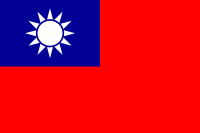
Photo from wikipedia
The Three Gorges Dam (TGD) is the world's largest hydropower construction. It can significantly impact contaminant transport in the Yangtze River-East China Sea Continuum (YR-ECSC). In addition to evaluating the… Click to show full abstract
The Three Gorges Dam (TGD) is the world's largest hydropower construction. It can significantly impact contaminant transport in the Yangtze River-East China Sea Continuum (YR-ECSC). In addition to evaluating the impact of the TGD on the deposition of contaminants in the reservoir, we also address their cycles in the river below the dam and in the coastal East China Sea. A comprehensive study of metal contaminant transport along the YR-ECSC has not been previously attempted. We quantified the fates of mercury (Hg), arsenic (As), lead (Pb), cadmium (Cd) and chromium (Cr) within the YR-ECSC, and the impacts of the TGD, by sampling water and suspended particles along the Yangtze River during spring, summer, fall, and winter and by modeling. We found that the Yangtze River transports substantial amounts of heavy metals into the coastal ocean. In 2016, riverine transport amounted to 48, 5900, 11,000, 230, and 15,000 megagrams (Mg) for Hg, As, Pb, Cd, and Cr, respectively, while other terrestrial contributions were negligible. Metal flux into the coastal ocean was primarily derived from the downstream portion of the river (84-97%), while metals transported from upstream were largely trapped in the Three Gorges Reservoir (TGR, 72%-96%). For example, 34 Mg of Hg accumulated in the TGR owing to river damming, large-scale soil erosion, and anthropogenic point source releases, while 21 Mg of Hg was depleted from the riverbed downstream owing to the altered river hydrology caused by the TGD. Overall the construction of TGD resulted in a 6.9% net decrease in the Hg burden of the East China Sea, compared to the pre-TGD period.
Journal Title: Water research
Year Published: 2020
Link to full text (if available)
Share on Social Media: Sign Up to like & get
recommendations!